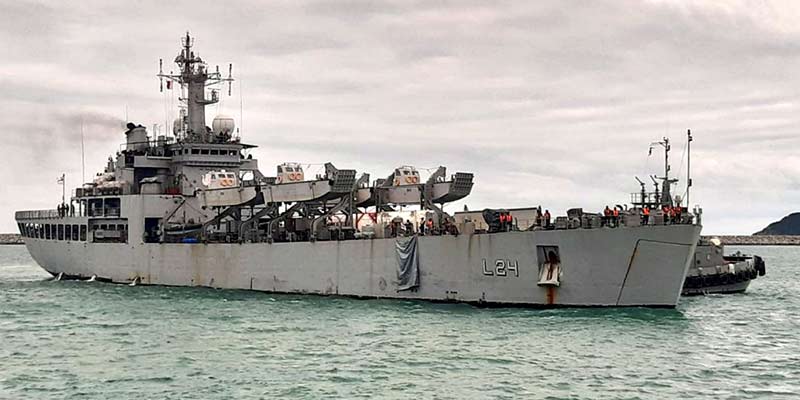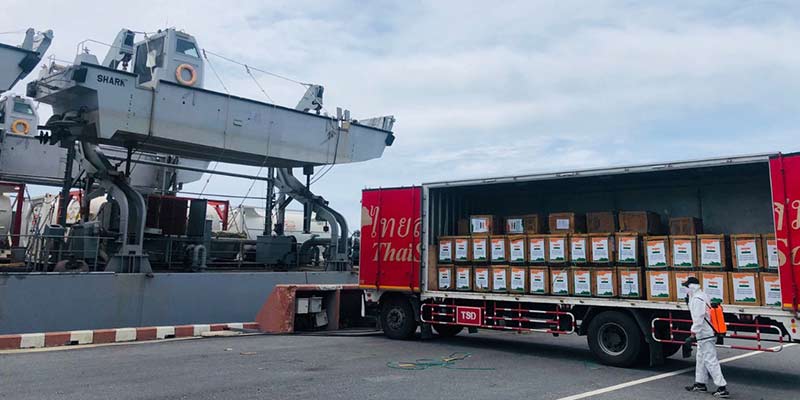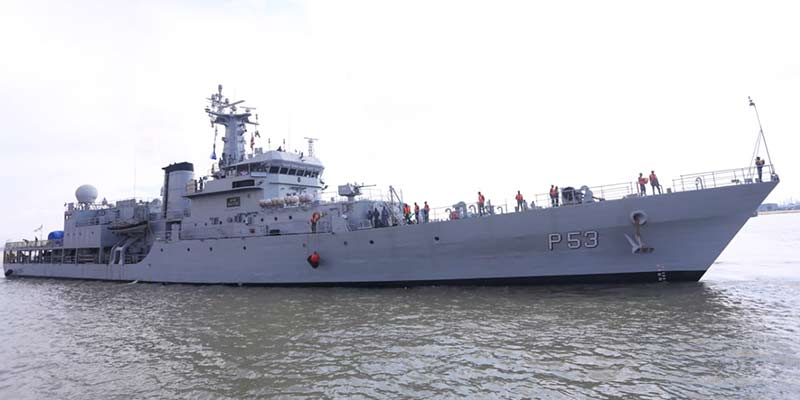- India
- Sep 04
What is Mission SAGAR?
• As part of the ongoing Mission SAGAR, INS Airavat reached Sattahip in Thailand with COVID relief material. The ship delivered 300 oxygen concentrators based on the requirement projected by the government of Thailand in its fight against COVID-19 pandemic.
• INS Airavat has been deployed to deliver COVID relief material to friendly foreign nations in Southeast Asia under the aegis of Mission SAGAR launched by the Indian government last year.
• In the current deployment, the ship has delivered COVID relief materials to Indonesia, Vietnam before arriving in Thailand.
• Earlier this week, Indian Navy’s Offshore Patrol Vessel INS Savitri reached Bangladesh’s Chattogram harbour carrying two 960 LPM (Litres Per Minute) Medical Oxygen Plants (MOP) to support the ongoing efforts of the military and government agencies in combating the pandemic in that country.
Mission SAGAR
• Mission SAGAR is a major milestone in India’s engagement with the countries in the Indian Ocean Region, in line with ‘SAGAR — Security and Growth for All in the Region’.
• Launched on May 10, 2020, Mission SAGAR is India’s initiative to deliver COVID-19 related assistance to the countries in the Indian Ocean Region.
• Mission SAGAR is in line with India’s role as the first responder in the region and builds on the excellent relations existing between these countries to battle the COVID-19 pandemic.
• As part of this Mission, INS Kesari successively visited Maldives, Mauritius, Madagascar, Comoros and Seychelles during May-June 2020 to deliver assistance to our maritime neighbors in dealing with the COVID crisis.
• India’s humanitarian assistance included supplies of essential food items, medicines, Ayurvedic medicines and deployment of medical assistance teams to Mauritius and Comoros.
• As part of Mission SAGAR-II, Indian Naval Ship Airavat delivered food aid to Sudan, South Sudan, Djibouti and Eritrea.
What is SAGAR policy?
• Prime Minister Narendra Modi introduced the concept of SAGAR — ‘Security and Growth for All in the Region’ during his visit to Mauritius in March 2015.
• It is a high-level articulation of India’s vision for the Indian Ocean. SAGAR has distinct but inter-related elements and underscores India’s engagement in the Indian Ocean.
• The principles enshrined in SAGAR provide a coherent framework to address some of the challenges related to economic revival, connectivity, security, culture and identity.
• During his address in Maldives Parliament in June 2019, Modi said SAGAR is also a blueprint for cooperation in the Indo-Pacific region.
• Under the broad vision of SAGAR, relations have been augmented with partners in the region in defence and security, development partnership, training and capacity building. The Indian Ocean Region received priority in COVID assistance.
Key features of SAGAR:
• Enhancing capacities to safeguard land and maritime territories and interests.
• Deepening economic and security cooperation in the littoral.
• Promoting collective action to deal with natural disasters and maritime threats like piracy, terrorism and emergent non-state actors.
• Working towards sustainable regional development through enhanced collaboration.
• Engaging with countries beyond shores with the aim of building greater trust and promoting respect for maritime rules, norms and peaceful resolution of disputes.
• The ‘Blue Economy’ has emerged as a promising new pillar of prosperity in the region, with immense economic and employment potential. India is engaging with its neighbours in Blue Economy initiatives, particularly in the areas of marine bio-technology, exploration and sustainable exploitation of ocean mineral resources, sustainable fishing practices, and harnessing of ocean energy.
Challenges for SAGAR:
• The main challenge is to ensure intra-ocean trade and investment, and the sustainable harnessing of the wealth of the seas, including food, medicines and clean energy.
• Security is fundamental to the SAGAR vision. If the revitalised maritime economy of the Indian Ocean region is to be a force for global economic growth, it is essential that the waters remain peaceful, stable and secure.
• The waters must not only be better connected but they should remain free from non-traditional and traditional threats that could impede the seamless movement of goods, people and ideas.
• The Indian Ocean is prone to non-traditional security threats like piracy, smuggling, maritime terrorism, illegal fishing, and trafficking of humans and narcotics.
Manorama Yearbook app is now available on Google Play Store and iOS App Store



